
Curator’s statement
With more sunny days than any other Caribbean island, Aruba is certainly one happy island. Traveling in early December is a perfect way to escape the pre-winter chill and holiday madness. Aruba is part of the ABC (Aruba, Bonaire and Curaçao) islands, a trio of picturesque destinations in the southern Caribbean. The island's dry climate (and location outside the hurricane belt) makes it a year-round destination, perfect for sunbathing on its pristine white-sand beaches, playing in the crystal-clear turquoise waters and exploring natural wonders like Arikok National Park or Flamingo Beach. One thing is for certain, Aruba promises an unforgettable tropical experience filled with warmth and relaxation.
The Fora Difference
Book with Jaimie to access exclusive perks and experiences on your trip.
Killer perks
Free upgrades, spa credits and more—we got you
Personalized recs
Customized travel planning for your style
Insider knowledge
Expert advice from people who’ve actually been there
Where to stay
Unlock perks by contacting Jaimie to book your trip.
Day 1: The Island Ultimate Safari
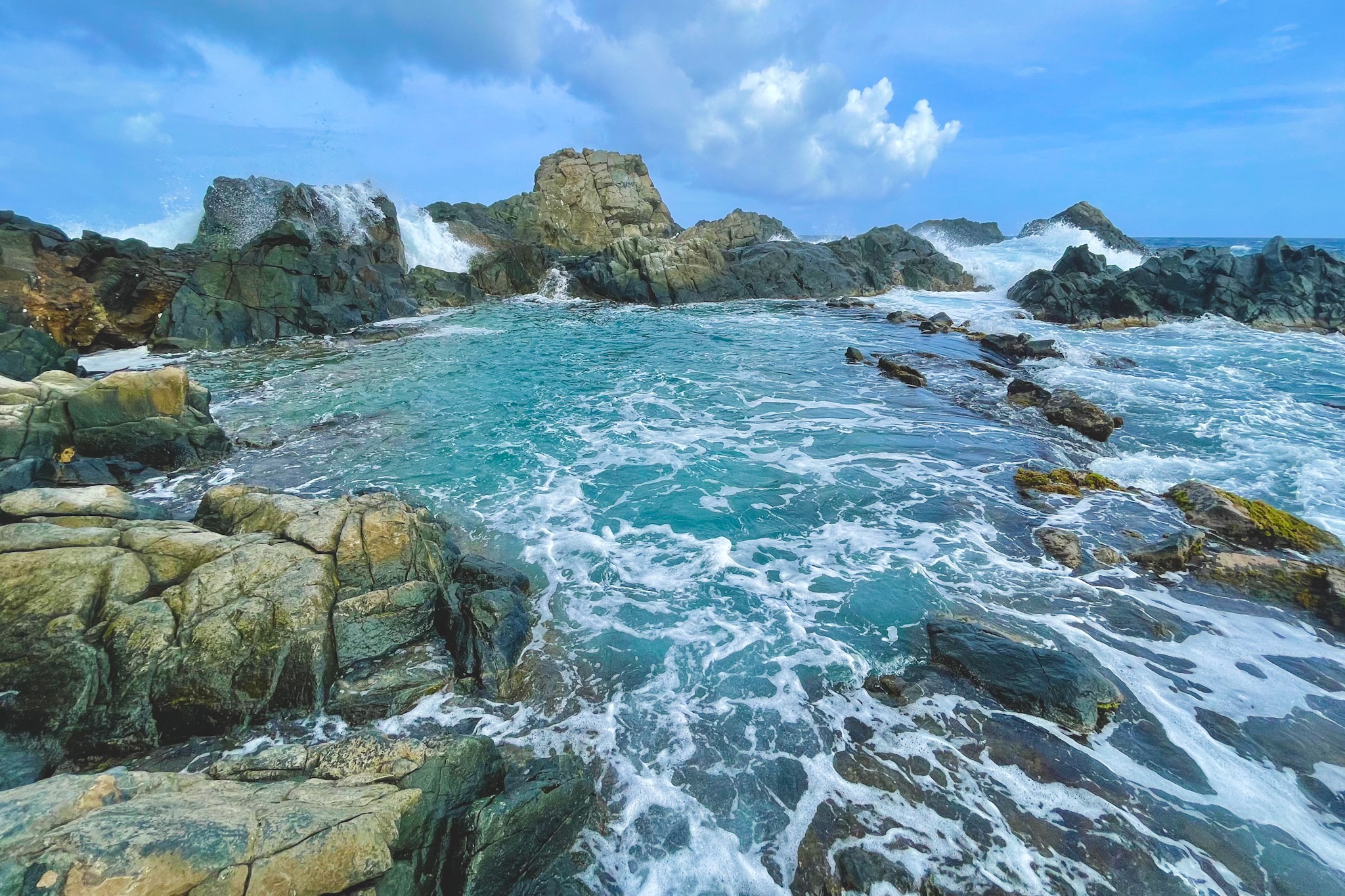
What better way to check out the island than a full-day Jeep sightseeing trip. Go with ABC Tours and book the Island Ultimate Safari. This tour offers many stops, including the hard-to-reach Conchi, (aka natural pool), as well as a final stop at Baby Beach. Aruba is a very large island and only a small portion of it is habitable. The north coast is more rugged terrain, often a 4x4 is recommended and the ocean currents are much stronger, so swimming is not recommended.
We started out on the north side and continued on dirt roads to the east, stopping at a few fun and historical sites along the way. Some highlights included the California Lighthouse (named after the ship California, which wrecked nearby in 1891), Alto Vista Chapel (first church in Aruba), Bushiribana Ruins (a gold mill built in 1974 during the gold rush) and the Natural Bridge. The original “mother” bridge collapsed in 2005 during an earthquake (which happened exactly a year after the island’s most devastating hurricane hit). However, the “mother” bridge, after collapsing, left behind her “son” of a bridge.
We continued on to the east side and over to the Arikok National Park, which covers about 18 percent of Aruba. In the middle of the Arikok National Park, surrounded by volcanic stones lies the natural pool, known as Conci or “bowl” or “Cura di Tortuga”. The only way to access this area is by hiking (about an hour) or a 4x4 vehicle through the national park. On calm days, it’s a great place to soak and swim, but unfortunately when I was there the seas were too rough for us to be able to swim.
On the way out of the park, we took a few minutes to explore the Fontein Cave, a 1,000-year-old and 110-meter long cave. Here, if you are lucky, you may see a white rattlesnake. The final stop is Baby Beach, where you can grab a beer and swim. This tour was by far the best way to spend my first full day in Aruba and a great way to acclimate to the time zone and get through the last bit of my jet lag.
For dinner, I walked into Palm Beach town and had the best dinner of my trip at Azia Restaurant. A blend of Caribbean and Asian cuisine, this restaurant did not disappoint in ambiance, service, cocktails or food. A must-try is the Aruba rocks, a beef tenderloin which cooks on a hot stone in front of you and comes with wasabi butter.
Day 2: Self-guided snorkel tour
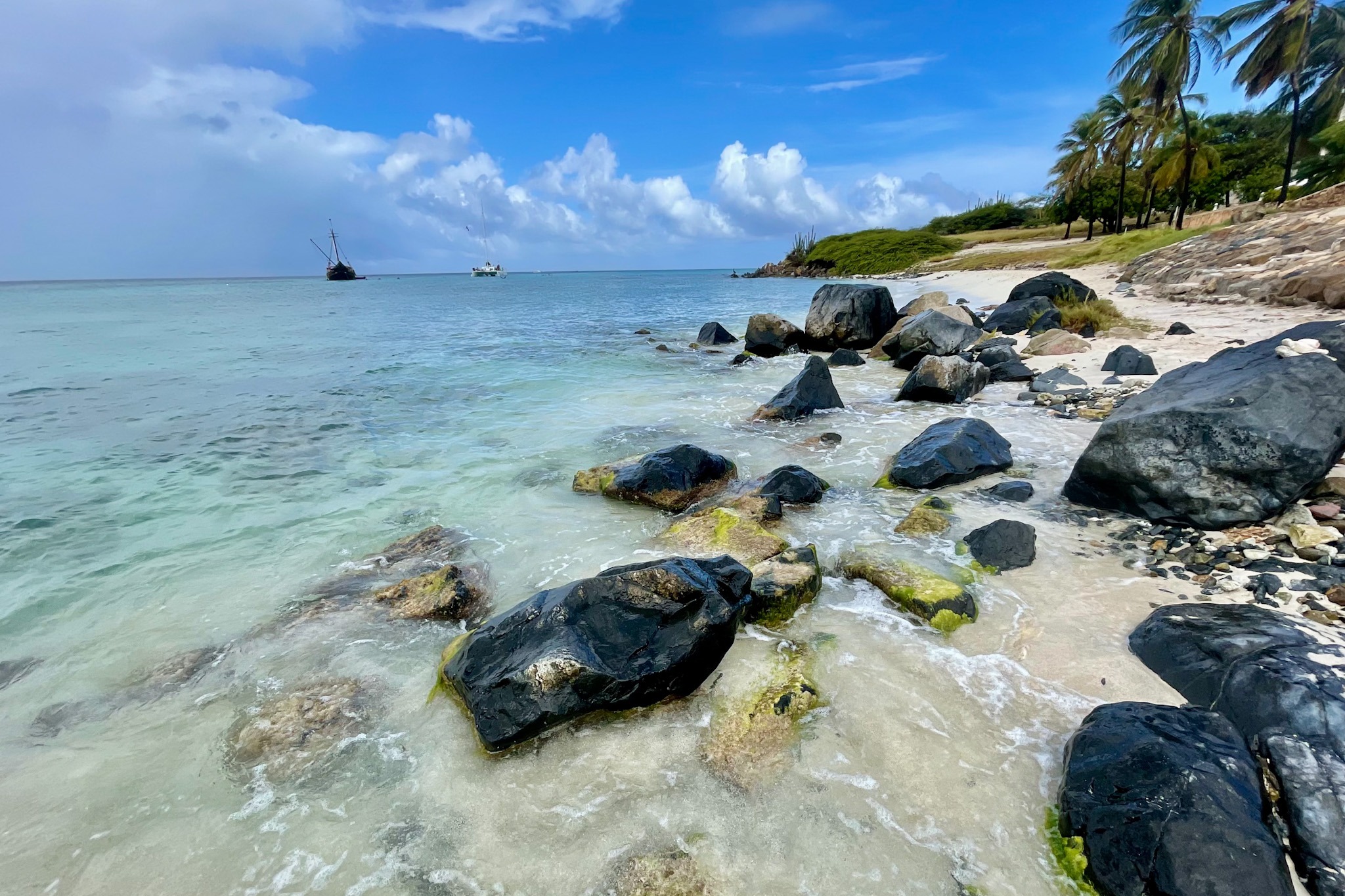
On a recommendation, I got up early on my second morning and trekked out of my hotel on a self-led snorkel tour of the north-west coast. All three spots are very close to each other (walkable) and will often be a stop on snorkel boat tours. If you are looking to see more activity, go before 9 am, as the boats start to arrive around 10 am. From Palm Beach, catch the local bus to the first stop, Malmok Beach.
Malmok: This spot, about five to 10 minutes south of Tres Trapi (the most popular spot), is where I saw the biggest turtle of my life! It has a rockier entrance, but I was fine in bare feet. There is a blow hole along the rocks to the left and lots of fish along that side. The turtle sighting was a surprise as there is not a lot of sea grass in the area.
Tres Trapi: One of the most popular spots, it is easily identified and accessible by taking three steps into the sea. As I stated above, boats arrive by 10 am, so if you want to swim with turtles, get there early. Make sure to swim out far enough toward the sea grass and slightly south to hang with them. If you stay closer to the rocks on the northern end, there are lots of colorful fish.
Boca Catalina: This spot is just slightly north of Tres Trapi (literally a two-minute walk) and is surrounded by pretty rocks along the sand. This area was full of endless pockets of coral and fish, both straight out of the sand and along the rocky coastline. Snorkel boats dock a bit further out from this spot, and it is a much larger area.
Arashi Beach: North of Boca Catalina is Arashi beach. Not a great snorkel zone, but a fabulous beach to rent a chair, grab a cold beer and chill. I sat on the south side, away from people and snorkeled out and to the left. Not much to see, so the rest of the day was all about relaxation before I took the bus back to Palm Beach
A must-stop on the island just outside of Palm Beach (I took a taxi) is Papiamento. The restaurant is situated in a 100-year-old Aruban 'cunucu’ house and includes a cigar lounge, wine vault and antiques dating back to the early 1800s. Dine poolside, under the stars in lush garden. They are known for their oyster chowder, which I had as well as the gorgonzola-crusted tenderloin.
Day 3: Wind or kite surfing lesson and snorkel tour
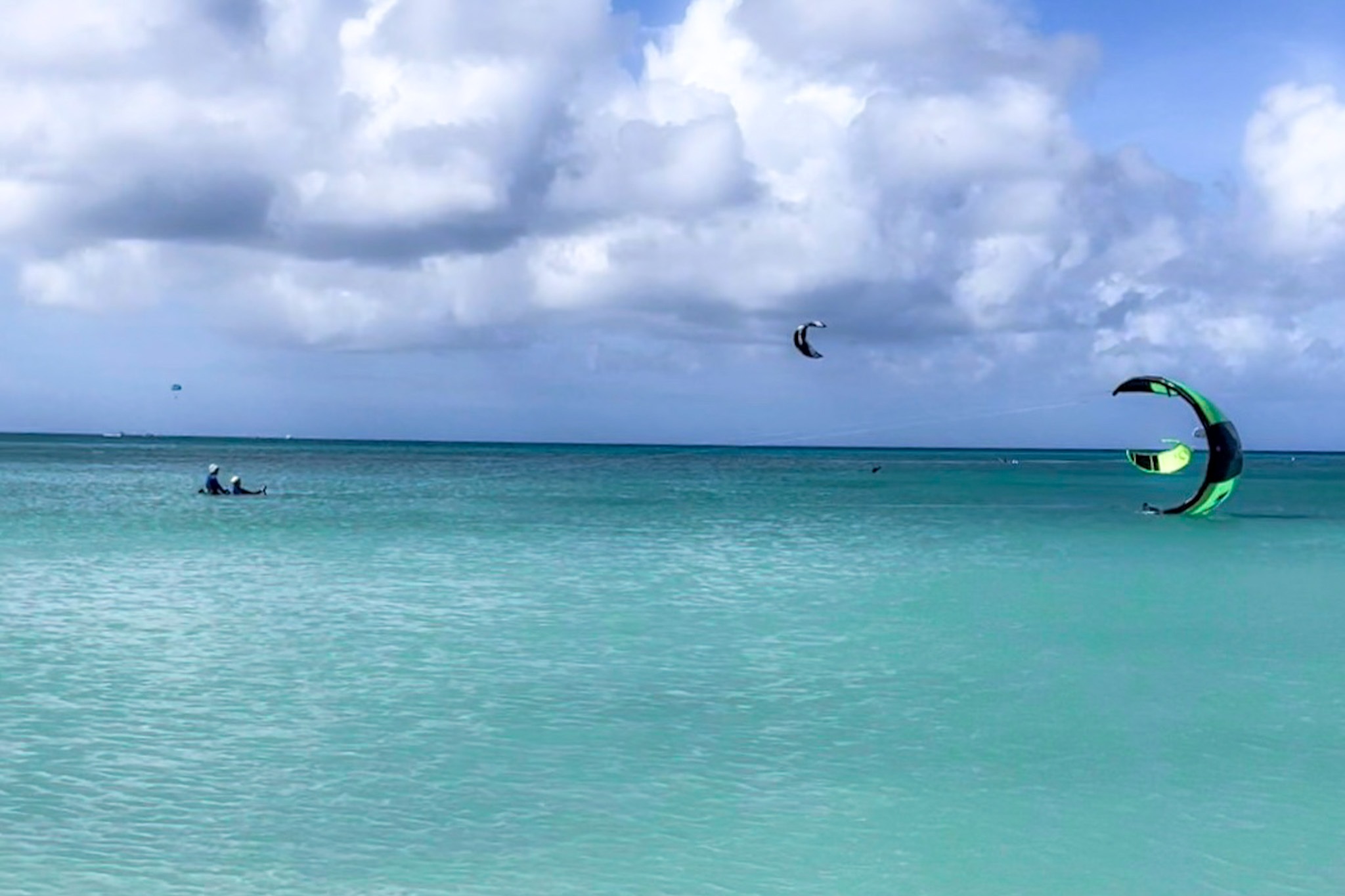
I like to break up my trips with organized activities and go-with-the-flow activities. If you are looking for more adventures on the water, I highly recommend doing a wind or kite surfing lesson. Aruba is known for their trade winds and is a very popular destination (aside from the Dominican Republic) for kite and wind surfing. Stroll down to Hadicurari Beach and watch everyone take flight. If you are interested in a lesson, this area has a few great places. I opted to take a wind surfing lesson with Vela Windsurf & Kitesurf, which lasted a few hours and gave me a good run-down of the kite and wind mechanics. If this is something you want to dive deeper into, they recommend three to five lessons to get on board.
If a more guided snorkeling adventure is of interest, that may be another option for today. I did book a half-day snorkeling trip and we did go to two areas I previously went to on my own. It was nice snorkeling Boca Catalina again, but much further out on the reef, where there were many more fish and coral. I chose Pelican Tours Champagne Brunch cruise because they offered a stop at the Antilla shipwreck, the 400-foot-long German freighter, which sunk during WWII. The snorkeling was great, however I made the mistake of jumping on a boat with a capacity of 75.
Kept it easy for dinner and headed to Lola Taqueria’s which shares a wall with Craft, a favorite for breakfast. I always love to check out local taco shops, and this one did not disappoint.
Day 4: Eagle Beach
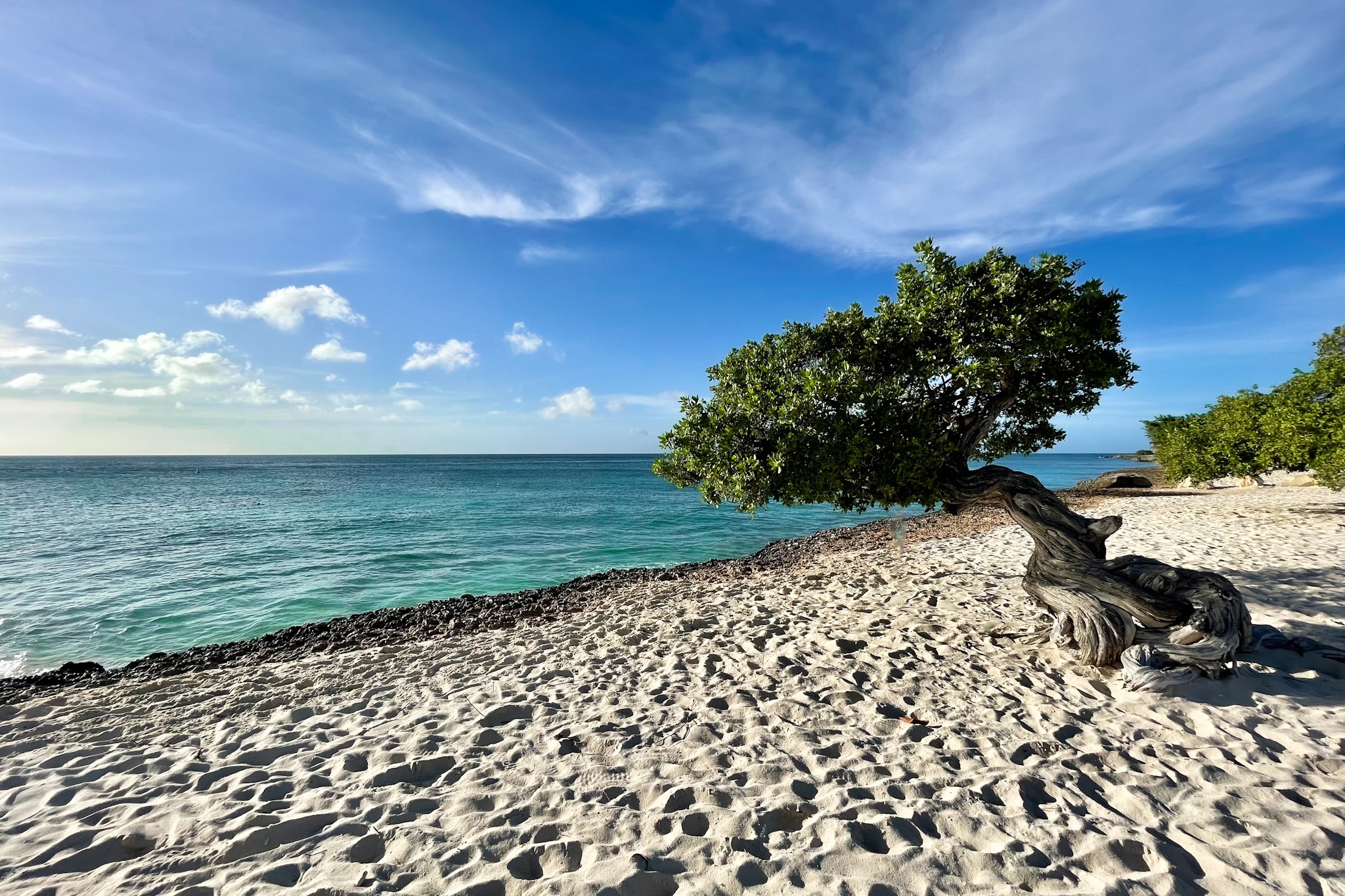
Depending on your activity level and desire to explore more beaches, I would recommend heading to Eagle Beach for the day. I headed there by bus midday and stayed for sunset. It is home to the famous Fofoti tree (also called a Divi tree) that are native to Aruba. Sculpted by the trade winds, they are known as nature’s compass because they alway point southwest. These trees are found all over the island, but the famous grove is located on Eagle Beach. They are protected (aka don’t hang on them for your gram photo), since they are a natural wonder and treasure. This area is a bit quieter than Palm Beach and has less beachside dining and drinks.
I planned my excursion to Eagle Beach with my dinner spot in mind, Po-ke Ono Aruba. This restaurant is one of the highest-rated in Aruba and their sushi and poke bowls were amazing and very reasonably priced, as it is slightly off the beaten path.
Day 5: Renaissance Island
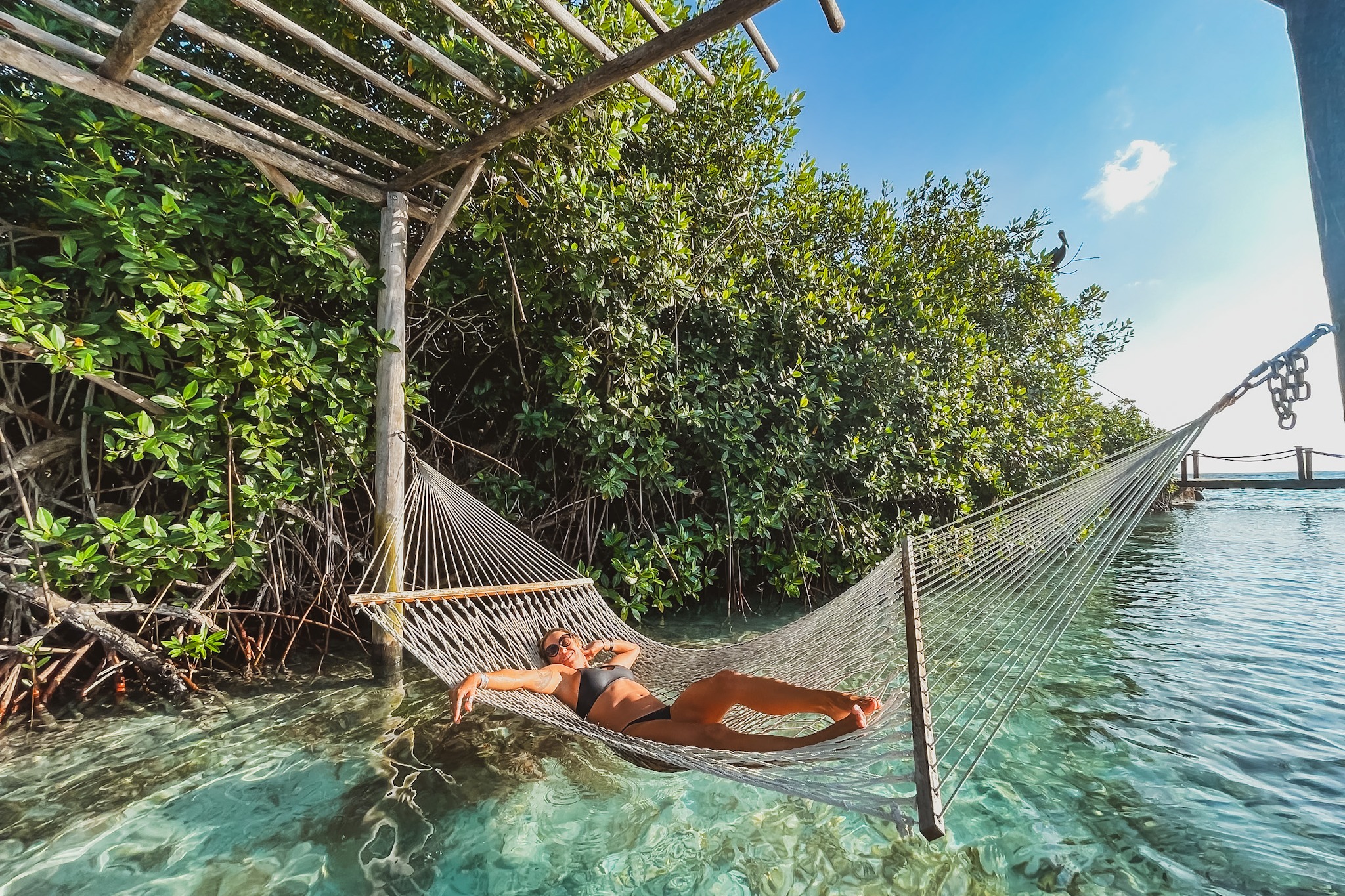
My last few days were spent in Oranjestad. I wanted to split my trip between two hotels, specifically because I did not want to stay in Oranjestad the entire time, as it is a cruise ship port, meaning there are tons of people all the time. However, it is home to Renaissance Island, and is often known as Flamingo Beach. This island is full of flamingos wandering around. You can feed them (bring coins!), take photos with them and, if your lucky, shower with them. There are two separate beaches on the island. One side is the Flamingo Beach, which is adult only. There are hammocks and chairs to sun-tan on, cabanas and showers. On the other side is Iguana Beach, and yes, many iguanas are also roaming about. Iguana Beach is family/kid friendly and has paddle boards. Both beaches offer their own restaurant and bar. You can wander from side to side.
In order to get to the island and the beach, you take a water taxi from the Renaissance Wind Creek hotel. Admission to the island is free for guests, which is why I opted to stay there. Otherwise, day passes are sold for $125 per person. Securing your pass can be difficult and they sell out fast during peak season since numbers are limited. They are only sold online, and rumor has it they go on sale at 9 am on Saturdays for the following week.
I ate within the hotel both nights, one night at Blue, the adult-exclusive martini and tapas bar and the other night savoring steak at the L.G. Smith’s Steak & Chop House. The food was amazing at both.
Additional days
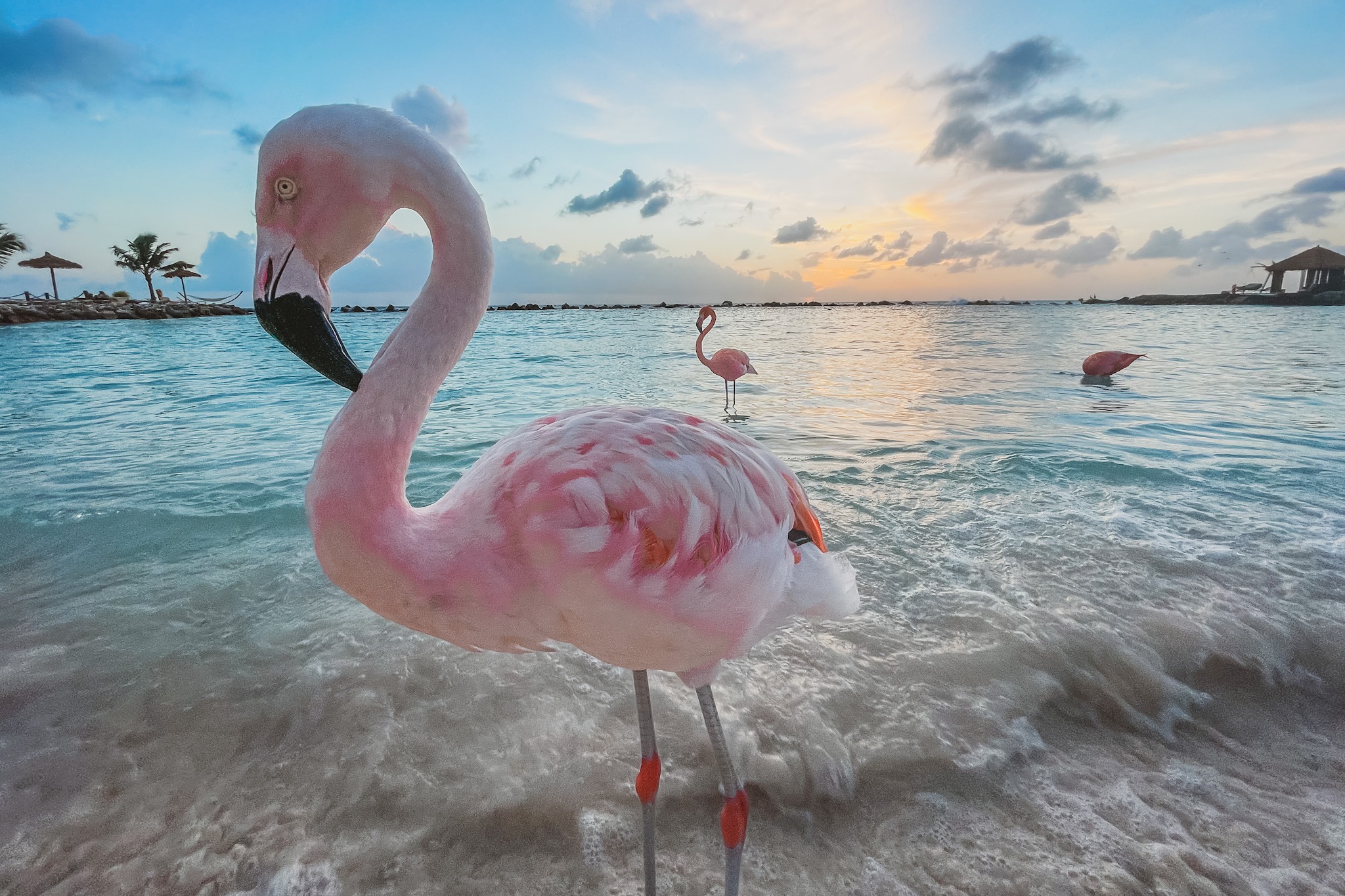
I spent two full days at Flamingo Beach because it was included with my hotel stay and adults only. The beaches in Oranjestad are not great as it is a port town. There is plenty to do on Renaissance Island besides hanging with flamingos. You can go paddle boarding off Iguana Beach (on the left side of the island) and/or just north of Flamingo Beach there is a nice nature trail to walk. The Mangrove Beach Bar on Flamingo Beach is full-service so you can easily spend a day here eating, drinking and relaxing. I stayed for the full day both days and captured beautiful sunsets. The water taxis come and go back to the hotel quite often, so it is easy to split up your day if need be.
Need to know
I opted to stay in Palm Beach because there were more hotel options, dining options and a ton of beachside bars and restaurants. It is also very walkable at night and everything is very close. There is a wonderful plaza with a ton of dining and shopping. Palm Beach is also where a lot of the all-inclusive hotels and boat tours are located. The beaches here are beautiful. After visiting Eagle Beach, I was very happy with my decision. Eagle Beach is a bit quieter and an area that has more condos/VBROs. Oranjestad is the main port town, close to the airport and full of shopping. It does host the beautiful Renaissance Wind Creek Marriott, and if Flamingo Beach is on your radar, a night or two at the beginning or end of your trip is definitely recommended.
Renting a car may not be necessary (unless you are traveling as a large group or with children), especially if you are staying in Palm Beach, where everything is walkable. The bus system in Aruba is awesome. I traveled from Palm Beach up to Arashi Beach and back, as well as to Eagle Beach and back. I was able to use transport to and from the airport via taxis, which are metered, making this vacation super affordable. Also, most rental car companies will not let you head to the north side, as the terrain is very rugged.
Good news! No need to change you dollars over to different currency. Everywhere, even the bus, takes American dollars.
Please leave seashells behind. Not only will they confiscate them when you pass through customs (they are very strict!!), you may also have to pay a fine. Also, you will want to give yourself a bit of extra time on your departure if you are flying back to the Untied States, as you will go through passport control and US Customs in Aruba after immigration and prior to boarding your flight. Just know that certain food items need to be left prior to entering the airport.

Travel Advisor
Jaimie Bayer

Get in touch with Jaimie
Did you like this guide? Reach out to customize and book your own experience. Or, just to chat about travel in general.
You can expect a response from Jaimie within 1–2 business days. You’ll also be subscribed to our traveler newsletter (you can unsubscribe at any time).
This itinerary is part of our ongoing series on travel to Aruba. Looking for more travel inspiration? Check out my itinerary, A Week in Bacalar - The Maldives of Mexico.